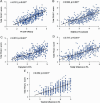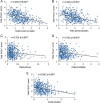The prevalence and determinants of physical activity in secondary Vietnamese students: a hierarchical analysis
- PMID: 40335956
- PMCID: PMC12060308
- DOI: 10.1186/s12889-025-22308-z
The prevalence and determinants of physical activity in secondary Vietnamese students: a hierarchical analysis
Abstract
Background: Physical activity (PA) levels among adolescents are low globally and in Vietnam. This study aims to assess the prevalence of PA and identify demographic, psychosocial, and behavioral factors related to PA among secondary school students in Ho Chi Minh City.
Methods: A cross-sectional study was conducted from March to May 2023, involving 475 6th-grade students. Data were collected through self-reported questionnaires and anthropometric measurements. Psychosocial factors, including self-efficacy, enjoyment, family influence, and belief in PA were measured using validated scales, while teacher influence on PA was evaluated using a custom-designed questionnaire. Sedentary behavior was assessed using the Adolescent Sedentary Activity Questionnaire (ASAQ), and PA levels were determined using the Physical Activity Questionnaire for Older Children (PAQ-C). Gender differences were analyzed using chi-square tests and t-tests. Pearson's correlation coefficient and hierarchical multiple regression were applied to examine associations and factors influencing PA.
Results: Only 36.8% of students met the recommended PA levels, with boys (40.7%) being more active than girls (32.9%). Boys had higher body mass index (BMI) and more screen time, while girls spent more time on cultural and social activities. Positive correlations were found between PA levels and psychosocial factors, especially in self-efficacy (r = 0.761, p < 0.001) and family influence (r = 0.717, p < 0.001). Sedentary behaviors, such as small screen recreation (r = -0.449, p < 0.001) and after-school education (r = -0.380, p < 0.001), negatively correlated with PA levels. Hierarchical analyses showed that BMI, self-efficacy, beliefs, family and teacher influence, and time spent on small screen recreation and after-school education significantly explained PA among adolescents.
Conclusion: Vietnamese adolescents have low PA levels, with gender differences. Interventions should enhance support, reduce sedentary behavior, and address gender-specific barriers.
Keywords: ASAQ; Adolescent activity; Gender differences; PAQ-C; Psychosocial factors; Public health intervention; Sedentary behavior.
© 2025. The Author(s).
Conflict of interest statement
Declarations. Ethics approval and consent to participate: The study received ethical approval from the Ethics Committee of the University of Medicine and Pharmacy at Ho Chi Minh City (Number: 261/HDDD DHYD granted on 03/03/2023). Written consent forms were obtained from all students and their parents or guardians before participating in the study. Participants were fully informed about the study objectives, procedures, potential risks, and their right to withdraw at any time without consequences. Permissions for non-commercial use of all questionnaires in the study were granted by the corresponding author of those questionnaires under non-disclosure agreements. All procedures followed the National guidelines for ethics in biomedical research and the Declaration of Helsinki. Consent for publication: Not applicable. Competing interests: The authors declare no competing interests.
Figures


References
-
- Khan A, Lee EY, Rosenbaum S, Khan SR, Tremblay MS. Dose-dependent and joint associations between screen time, physical activity, and mental wellbeing in adolescents: an international observational study. Lancet Child Adolesc Health. 2021;5(10):729–38. - PubMed
-
- Sampasa-Kanyinga H, Colman I, Goldfield GS, Janssen I, Wang J, Podinic I, et al. Combinations of physical activity, sedentary time, and sleep duration and their associations with depressive symptoms and other mental health problems in children and adolescents: a systematic review. Int J Behav Nutr Phys Act. 2020;17(1):72. - PMC - PubMed
MeSH terms
LinkOut - more resources
Full Text Sources
Medical
Miscellaneous

